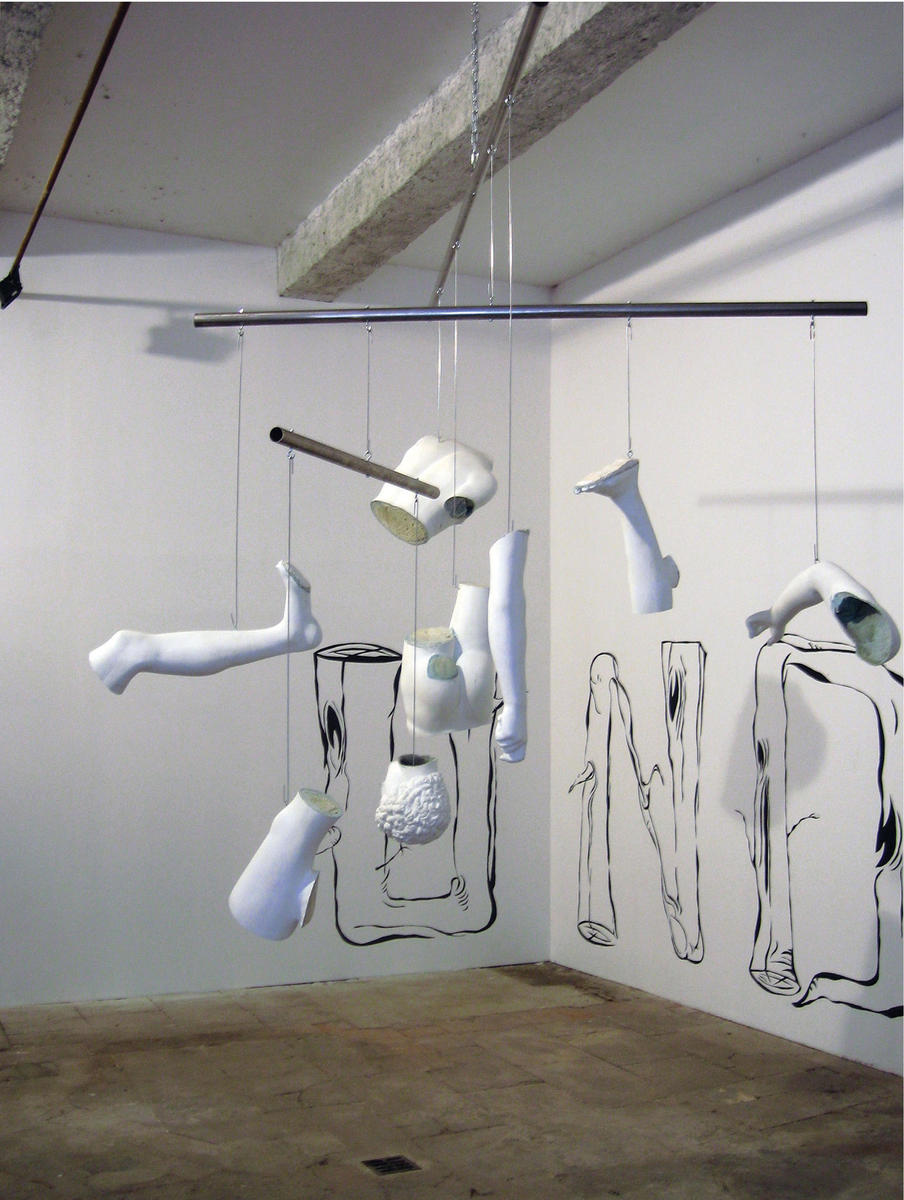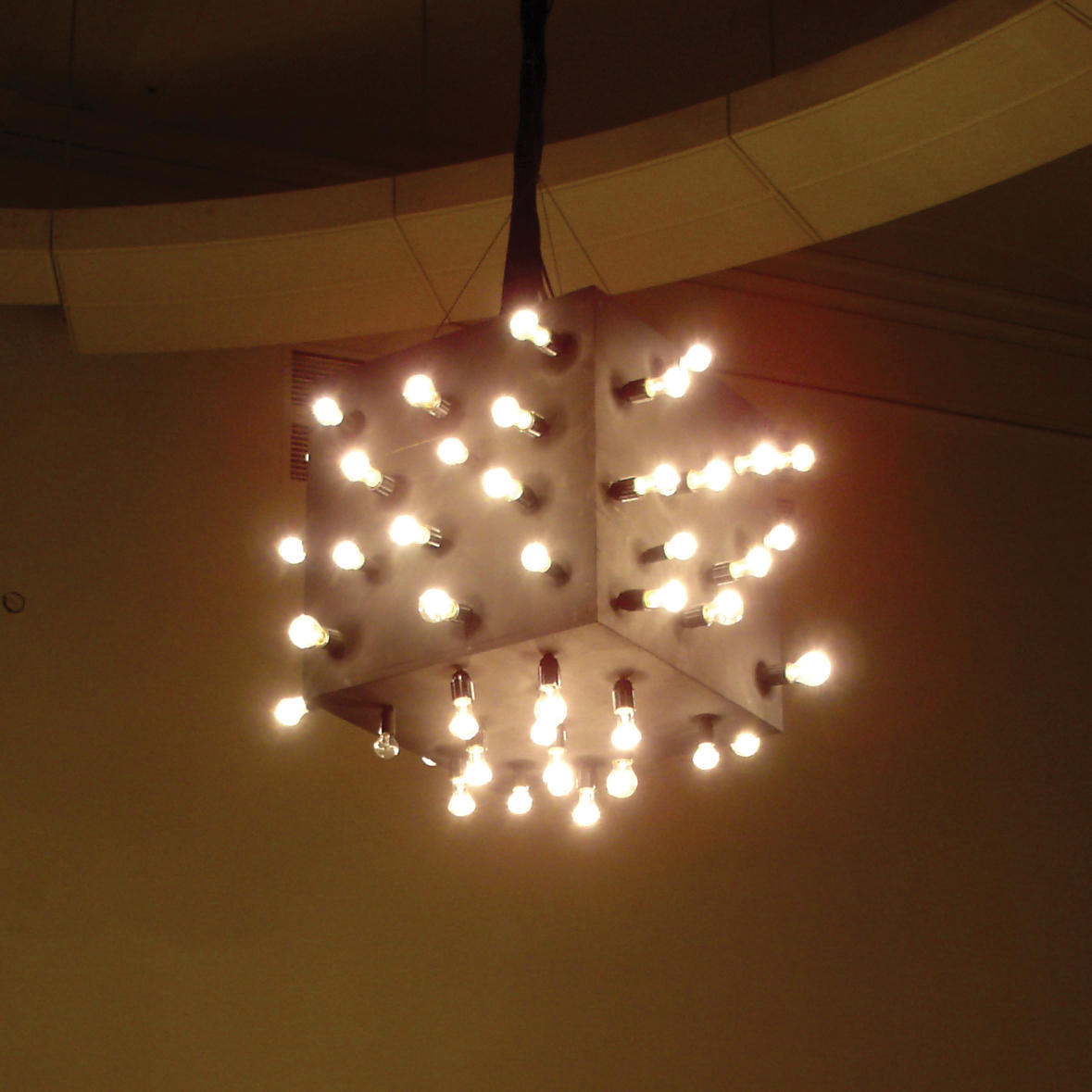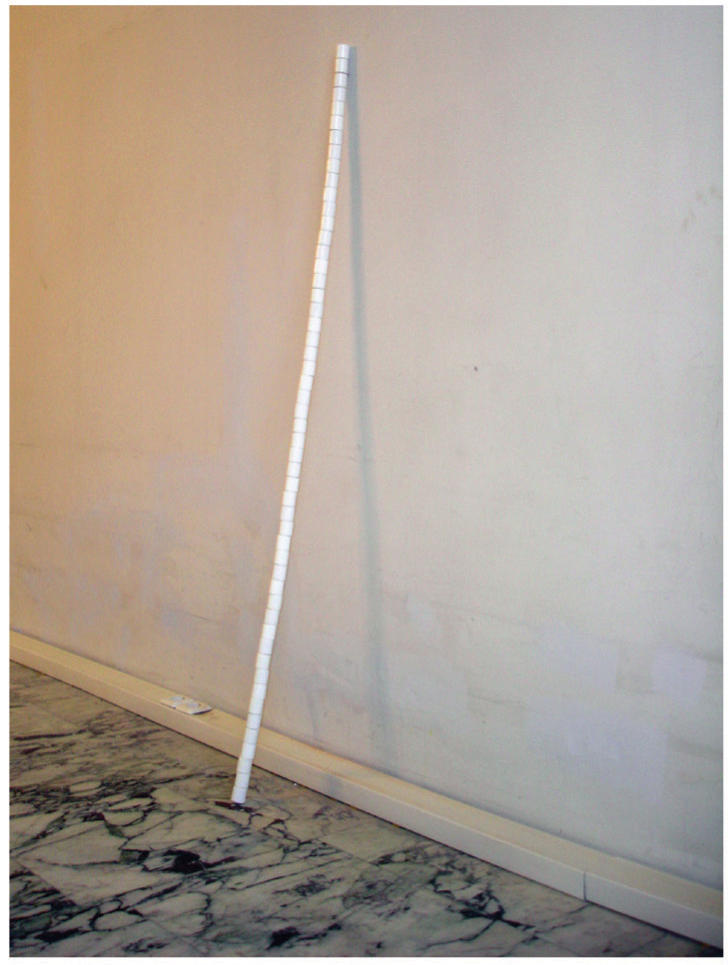
In his 1995 book Pirate Utopias: Moorish Corsairs & European Renegadoes, the essayist Peter Lamborn Wilson charted the emergence of a number of buccaneer-run micronations in seventeenth century North Africa, Temporary Autonomous Zones peopled by exiled Spanish Moors and European Christians who renounced the Roman Church in favor of the freedoms offered by Islam. Describing the Bou Regreg Republic (established in 1627 in present-day Morocco) as the world’s first truly democratic settlement, Wilson presented a radical rewriting of political history, one in which the supposed bad guys, with their strange laws, their alien religion, their extraterrestrial life on the ocean wave, dream the most beautiful of dreams.
Although Bou Regreg and its counterparts were fleeting, largely forgotten instances of human self-organization, something of their spirit nevertheless survived in the fictionalized, and often just plain fictional, corsair communities (all of them notably non-Islamic) described in texts ranging from Daniel Defoe’s A General History of the Pyrates (1724) to William Burroughs’s novel Ghost of Chance (1991), from China Miéville’s “new weird” sci-fi epic The Scar (2002) to Disney’s woeful Pirates of the Caribbean: At World’s End (2007). The conventionally disparate concepts of piracy and utopia embrace, then, in the afterlife of literary and cinematic fantasy.

Most of today’s pirates are not bearded seafarers but sebum-slicked adolescents, and the closest thing they get to a utopian space is an online BitTorrent hub. This shift from the romantic to the domestic, from the cutlass to the computer mouse, informed an early work by the French artist Saâdane Afif, entitled Pirate’s Who’s Who (2000-2004). Afif presented the purchasers of the piece’s six editions with an undulating, glitter-spangled Ron Arad Lovely Rita bookshelf and a contract stipulating that they must fill it with volumes about buccaneers.
We might read Pirate’s Who’s Who as a participatory project in the tradition of the set of artistic practices identified in Nicholas Bourriaud’s Relational Aesthetics, but this would be to mistake the approach of one generation for another, and to ignore the piece’s whisper of aggression. The contract served to double up the authorship of a given edition, with all the nods at plurality and polyphony that that implies, but the power relationship it set up was, ultimately, not that between skull-and-crossbones-waving brothers in arms, but something like that between captain and crew. Afif’s work forced collectors back on their own artistry, their ability to stack their shelves with titles that exhibit insight and wit. (Did any of them, I wonder, adorn their Lovely Rita with Wilson’s book?)
This, with the knowledge that there were five other iterations of the work out there, was a potential cause for anxiety — who would want to be responsible for shipwrecking Pirate’s Who’s Who on the shores of a flaccid imagination or shabby research skills? And yet, suffering through this anxiety was surely worth it for the chance it offered the collector to transform an edition into a one-off work, with the increase in value and aurific glow that would flow from that. Running through the project (or, perhaps, lapping over it like an encroaching tide) was the question of who was being pirated. Arad? Afif? The collector? The authors of the books he or she would select? Each of these was a potential victim; each was in his own way a corsair. Afif connected them in a matrix of appropriation and complicity, a brine-washed blurring of who’s who.
A list of facts about Afif might mention that he was born in France in 1970 of Algerian heritage; that he studied at l'Ecole Régionale des Beaux-Arts de Nantes; that he lives and works in Berlin; that he’s currently number 848 in artfacts.net’s wrong-hearted but weirdly compelling ranking of the world’s artists; and that in 2007 he was featured in thirteen-odd group shows, from the minuscule (my own Handsome Young Doctor at Cubitt, London) to the monumental (Roger Buergel and Ruth Noack’s Documenta 12). These kinds of facts, though, only get us so far, and to really evoke Afif, one might be better off sailing through considerably more subjective waters.
In an early catalogue essay, the Scottish artist John Beagles wrote, “On first meeting Saâdane… he was wearing worn out trainers, just like me…. I instantly liked him.” Similarly, following a night drinking with Afif during the 2006 Berlin Biennale, my best mate, a male model and fashion magazine editor, described Afif as possessing “that ugly-handsome, frayed-around-the-edges sexiness thing only guys in French movies can really pull off. His girlfriend’s super-hot, too.” More recently, a young French curator solemnly told me that “he is the next step. Pierre Huyghe and Philippe Parreno, they are the 90s. Saâdane belongs to now — to us.”
To this mix of personal first impressions and professional attempts at historicization, I’d add that what is exciting about Afif’s work is that he doesn’t employ participation as a megaphone through which to prate about wooly notions of democracy, but rather as a motor to generate moments of intensity, surprise, and delight. To me, his spirit is perhaps best summed up by his installation Sublime (2004), a great arrow that pointed toward the pin-pricked cosmos. You could almost imagine it as a cigarette brandished to illustrate a point in the best barroom chat you’ve ever had (the tall, skinny-limbed Afif is an aesthetically superb smoker), a hot-tipped symbol of conviviality and conversational collaboration that might, if everybody around the table dreamed hard enough, become a new star in the sky. Some early text works, produced around the millennium: the words SILENCE IS SEXY, ISN’T IT? (the title of a 2000 album by Berlin noise music band Einstürzende Neubauten, opened up to question); WORLD IS BEAUTIFUL AND SAD, ISN’T IT? (Saâd, we should note, is Afif’s nickname); and REVOLUTION IS NOT A PICNIC, IS IT? (a reference, perhaps, to Yasser Arafat’s 1974 declaration that “we are not on a picnic, we are in the midst of a revolution”), all daubed in glitter paint on whitewashed gallery interiors. The words RESTORE HOPE, the name of a 1992-1993 US military operation in Somalia, printed on a T-shirt worn by the artist on the cover of French music and culture magazine Les Inrockuptibles. And the words RICCHI O POVERI, BELLI O BRUTTI, TUTTI UGUALI NELLA TOMBA (rich or poor, beautiful or ugly, all are equal in the grave), a popular West African saying, translated into Italian and sprayed onto a wall in Turin.
What connected these phrases, besides the fact that they’re fun to roll off the tongue, was both the fact that they had been quoted, or sampled, and that as a string of mute letters rather than sounds their meaning was liable to mutate. Reading them, we got to thinking that maybe silence isn’t sexy, or that revolution might just be a picnic after all. The doublespeak of the US high command became a protest in favor of a better world, and an egalitarian maxim took on a tone of menace and threat. These works raised questions about who owns language, what hopes borrowing or stealing it hold, and what might be achieved with a subtle change of inflection or a transposition from one site to another. In Afif’s practice words (and images, and ideas) aren’t stable things; they’re in a permanent state of flux.
Afif’s A.A (conversation) (2002) was a white neon wall piece in the shape of a single schematic flower straining upward from a rhomboid pot, copied from a drawing made by his father. Afif’s father, for his part, had based his drawing on what he suspected was the first work of art he ever encountered, an image painted on the walls of the grim Algerian sanatorium where he spent a childhood convalescence. Two types of loss were in operation in this piece — the decay of memory, and the decay of an artwork’s aura through the process of reproduction. A.A (conversation) reversed them both. Surrounded by a corona of white light like a Kirlian photograph, an angel, or the most benign of ghosts, his neon flower enacted the apotheosis of the work his father saw so many years ago-enriching its recollection and upgrading it from the status of folk image into the rarefied realm of fine art. Piracy, here, was a family business, geared toward the generation and endowment of a fugitive type of wealth.
For his 2005 exhibition Lyrics: A Luminous Show of Time for a Sung Retrospective at the Palais de Tokyo, Paris, Afif brought together a series of artworks he made for the shows Melancholic Beat in Essen, Down at the Rock and Roll Club at the Moscow Biennale, and One Million BPM at the Centre d'Art Cimaises et Portiques, in a kind of best-of compilation. For each of those exhibitions, the artist had invited a writer (Lili Reynaud-Dewar for Essen, myself for Moscow, and Mick Peter for Albi) to put together lyrics for a set of preconceived installation pieces that were displayed alongside the works as vinyl wall texts, and asked various musicians (Tujiko Noriko and Portradium, Marcelline Delbecq and Rainier Lericolais, and North) to compose a set of songs based on the writer’s words, which were played on headphones in the gallery space and released as a CD in commercial music outlets.

More contracts then, more interpretation and reinterpretation, but what was really interesting was not the cold facts of a shift in authorship or medium, or his work’s slow march from the museum to record shop shelves-something that involved the translation of a unique object into a mass-produced one, and a move from an elite to a popular cultural habitat-but the grain of the relationship between artwork, libretto, and score. All authors involved in the Lyrics project had at some point to cede their authority to another; all had to anticipate the possible mistranslation of their creation, or accept that they must work according to somebody else’s rules. For example, when Afif created a resin cast of a classical statue sawn into pieces and suspended from an Alexander Calder-like mobile for Laocoon (2005), he could not have predicted that Peter would have responded to it with the words:
THREE HOLES IN THE HAT BRIM
WHERE BULLETS PASS
THOUGH WHERE’S THE HARM
WHEN YOU POSSESS SOMETHING
AND IT’S MADE BEAUTIFUL AGAIN?
And neither could Peter have predicted the nature of their musical rendering by North.
If these serial acts of translation risked a loss of form or of meaning, what endured was an economy of trust. An obvious parallel existed between the writers’ and musicians’ commentaries and the explanatory wall texts and audio guides available in major art institutions. Afif has long been concerned with the temporal, physical, and textual “supports” of a museum show, as works employing gallery furniture-such as his Memory of Fire (2004) and his staging in Hours (2005) of the time-code of the exhibition through his installation of a solar clock formed from sixty rock concert projectors at the Moscow Biennale-attest. But while most wall texts and audio guides are by their nature dogmatic and given to all sorts of problematic assumptions about the viewer, Afif’s decision to ask his collaborators to transcribe his work in words and sounds pointed to an almost infinite set of freedoms.
When I responded to his Ghost (2005) [a faux André Cadere (1934-78) Barres de Bois, in which the rainbow colors of the Polish artist’s iconic handheld staffs were replaced with a selection of subtly differentiated whites] with the following words:
I’M NOT SURE YOU WANT ME HERE
WEARING YOUR WORN, FAMILIAR CLOTHES
WELL, HERE I AM
THE HOLE IN YOUR ARGUMENT
THAT’S THE WHOLE OF MY ARGUMENT
AND I’VE NOTHING ELSE TO WEAR
What was offered up to the viewer was not an authoritative reading of the piece, but rather an affirmation of the fact that a work of art can never be exhausted by interpretation, and that every soul will remake it anew.

At the recent Documenta 12, Afif presented Black Chords Play Lyrics (2007), a work that translated the Lyrics project through his Power Chords (2005), first shown at the 2005 Lyon Biennale. Power Chords consisted of eleven white electric guitars propped up on stands that, with the aid of a computer program and rotating Perspex discs placed across their strings, seemed to be strumming themselves. The music they performed was arrived at by the artist through matching each of the colors in Cadere’s Barres de Bois to a “money chord” used by rock musicians, which is to say the popular chord progressions that cause fans to really lose it in the mosh pit and drivers in drab, Northern European towns to gun their cars like they’re speeding down Ocean Drive.
By “playing” these staffs — mobile works of art that Cadere would place, often uninvited and unwelcome, in other people’s shows — Afif embroiled the senior artist in an unbidden collaboration and transubstantiated the gritty irritant of his practice into pearly pop. The effect was not to neuter Cadere, but rather to socialize him, and to imagine a world in which his critique of the concept of the exhibition, something he saw as a microcosm of wider systems of taxonomy and control, might play to whooping, stadium-sized crowds. (“Good evening Basel; I’m Andre Cadere, and I’m here to rock the motherloving white cube!”)
Black Chords Play Lyrics exchanged the white guitars of Power Chords for black ones, and Afif’s scoring of Cadere’s work with a musical transcription of the words written for the Lyrics project, which itself alluded to the Barres de Bois in the piece Ghost. What the artist set in motion at Documenta was a dense compacting of his recent oeuvre (it’s no accident that the color of the guitars recalled the result of an imploded white dwarf star, a black hole), in which cause and effect were shuffled, and it was impossible to tell which element was riffing on which or, for that matter, the sequence in which one collaborator passed the baton on to another-nobody, here, plucked at the guitars’ strings. Creative genealogies were erased, and the “retrospective exhibition” of the Lyrics project became a thing that belonged to right here, right now.
It is often said that a perfect pop song is one that makes you feel like you’ve known it forever on the first occasion that you hear it. Afif’s work — with its perpetual transformations, its way with freedom, beauty, and surprise-achieves something similar. Not a pirate’s sea-shanty, then, but rather the brilliant pop art of “Baby One More Time.”